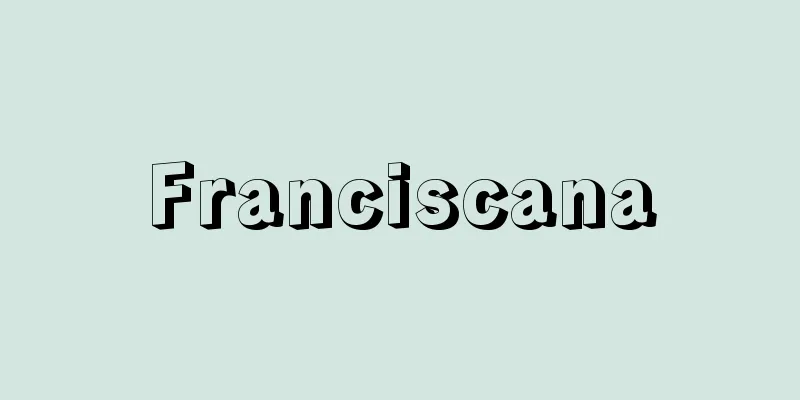Fortified foods - fortified foods

|
Foods that have been fortified with vitamins, minerals, amino acids, etc. without compromising the flavor or color of the food. In 1952 (Showa 27), the Nutrition Improvement Law was established, and required the permission of the former Minister of Health and Welfare, so the correct term is fortified food. Fortified foods were aimed at improving the nutrition of the nation, and 10 foods, such as rice, rolled barley, and wheat flour, were fortified with 8 types of nutrients, including vitamin B1 and calcium. A typical example was fortified rice with added vitamins B1 and B2 . Since then, the nutritional intake of the nation has improved, and in addition to fortified foods that supplement specific nutrients, many foods with added or adjusted nutrients for the purpose of promoting health and preventing lifestyle-related diseases have been distributed. In 1995 (Heisei 7), the "Law Partially Amending the Food Sanitation Law and the Nutrition Improvement Law" started a new nutrition labeling standard system, and the term "fortified food" was no longer used. The new system stipulates standards for the labeling of nutritional components and calorie content, such as "high," "low," and "none," and requires the content and calorie content of major nutrients to be displayed. [Tomomi Kono] OriginFood fortification began in 1936 when vitamin D was added to milk in the United States to prevent rickets in children. In 1940, the UK began adding vitamin B1 to wheat flour. In Japan, the issue was first introduced around 1949, and in 1952, the "Recommendations on Fortified Foods" were issued, and it took shape when the Nutrition Improvement Law was promulgated in the same year. The law stipulated the spread of "special nutritional foods" along with nutritional surveys and guidance for the public and nutritional management for mass lunches. "Special nutritional foods" included fortified foods and powdered milk for pregnant and nursing women. Fortified foods were those that contained the fortified standard amount set for each designated food and were approved by the former Minister of Health and Welfare. Foods that met these standards were able to be sold commercially with the fortified content, amount, and general nutritional analysis values displayed, and a certificate of "Ministry of Health and Welfare Approval Special Nutritional Food" was displayed. Although the system itself was abolished, nutritional fortification has continued since then. The main nutrients fortified are vitamin B1 and calcium, and fortified rice is a typical example of fortified food. Nutrients can be fortified with vitamins such as vitamin B1 , B2 , B6 , and niacin, or with calcium as the main nutrient. Fortified rice uses water-insoluble vitamins or coats the surface of the rice with a thin film to prevent the fortified vitamins from leaching out and being lost when the rice is washed. Fortified rice is mixed with regular rice when cooking. There are also calcium-fortified confectioneries such as biscuits and wafers. [Tomomi Kono] [Reference items] | | | |Source: Shogakukan Encyclopedia Nipponica About Encyclopedia Nipponica Information | Legend |
|
食品の風味や色などを損なうことなくビタミンや無機質、アミノ酸などを加え、栄養強化を行った食品。1952年(昭和27)、栄養改善法によって制度化され、旧厚生大臣の許可を必要としたもので、正しくは栄養強化食品といった。強化食品は国民の栄養改善を目的にしたもので、米、押し麦、小麦粉などの10食品にビタミンB1、カルシウムなど8種類の栄養素が強化された。代表的なものがビタミンB1、B2を添加した強化米であった。その後、国民の栄養摂取状況が改善され、特定の栄養素を補給した強化食品以外に、健康増進や生活習慣病予防を目的として栄養成分の添加や調整をした食品が多く出回るようになった。1995年(平成7)の「食品衛生法及び栄養改善法の一部を改正する法律」により新しく栄養表示基準制度がスタートし、「強化食品」と称するものはなくなった。新制度では栄養成分や熱量に関して「高」「低」「無」などの表示をする場合の基準を定め、主要な栄養成分の含有量や熱量も表示することを義務づけている。 [河野友美] 由来1936年、アメリカで子供のくる病防止の目的で牛乳にビタミンDを加えたのが食品栄養強化の始まりである。40年、イギリスでは小麦粉にビタミンB1を加えることが実施された。日本では49年(昭和24)ごろから取り上げられ、52年に「強化食品に関する勧告」が出され、また、同年、栄養改善法が公布されるに及んで具体化した。同法は、国民の栄養調査および指導、集団給食の栄養管理などとともに、「特殊栄養食品」の普及を定めた。「特殊栄養食品」には、強化食品と、妊産婦・授乳婦用粉乳などがあった。強化食品とは、各指定食品について設けられた強化基準量を含有し、旧厚生大臣の許可を受けたものをいい、これらを満たしたものは、強化内容や分量、栄養の一般分析値を表示し、「厚生省許可・特殊栄養食品」の証票を標示して市販することができた。この制度自体は廃止されたが、栄養を強化することはその後も行われている。強化する栄養素はビタミンB1とカルシウムが中心で、強化した食品の代表的なものが強化米である。栄養素の強化はビタミンB1をはじめB2、B6、ナイアシンなどビタミンがおもなものと、カルシウムがおもなものとがある。強化米は、洗米のとき強化ビタミンが溶出して損失しないよう、水に不溶性のビタミンを使用したり、米の表面に薄い膜をコーティングしたりしている。炊飯時に通常の米に混合して使用する。そのほか、カルシウムを強化したビスケットやウェファー(ウエハース)などの菓子類がある。 [河野友美] [参照項目] | | | |出典 小学館 日本大百科全書(ニッポニカ)日本大百科全書(ニッポニカ)について 情報 | 凡例 |
<<: Textbook Certification System - Authorization of textbooks
Recommend
Blue-headed dragonfly - Blue-headed dragonfly
Please see the "Black-tailed Dragonfly"...
Kisoji
In ancient times it was written as Kisoji, Kisoji,...
"The origin of Atsuta Palace Kanpei"
...The main special rituals are the Touka ritual ...
Perishable goods - Isonhin
A small parcel that is handled as a fragile item i...
Cottage organ
… [Reed Organ] In the mid-19th century, a new typ...
Chǒnsikwa - Densai-ka (English spelling)
The main rice field system in the Goryeo Dynasty. ...
Inoceramus - Inoceramus
A genus of marine bivalve mollusks that flourishe...
Aerated Concrete - Kiho Concrete
Also known as cellular concrete. Concrete that ha...
Odaenathus
…Julia Aurelia Zenobia (later Septimia Zenobia), ...
Nitrifying bacteria
...They are also called nitrite bacteria or ammon...
Jarosław Iwaszkiewicz
1894‐1980 Polish poet and novelist. Born in Ukrain...
Mohs hardness scale
The standard established by F. Mohs [1773-1839] to...
Morning Glow - Asayake
Around sunrise, the eastern sky takes on a differ...
Ernst Dronke
1822‐91 German social novelist. Born in Koblenz as...
Diego Garcia (Island)
The southernmost and largest island of the Chagos ...
![American Waltham Clock [Company] - American Waltham Clock](/upload/images/67cf3ee5cf448.webp)
![Makubetsu [town] - Makubetsu](/upload/images/67cce3fa8710f.webp)







